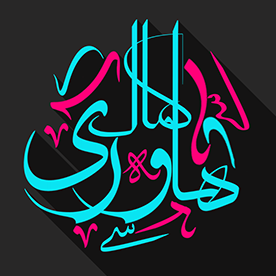

Dell produces a variety of
different types of servers, each of which can be arranged according to your
needs and requirements. Avesta provides all Dell servers in Iraq and has specialized
staff in servers that can recommend the best server for your work.
What's server?
Simply a server is a powerful
computer that serves a range of other computers, specifically designed to
deliver information, software, and data to other computers that are linked to it
connected to it via a network.
Why do I need a server?

What type of server do I need?
You need to know what kind of applications
you're running on that server? How many users(clients) it will have? Simple tasks
such as printing and sharing documents among users may require one simple, low-cost
server, but tasks such as hosting large databases and image libraries require a
server that has more processing ability with a set of fast hard drives.
Tower server: One of the basic
types of servers, it costs and takes up as much space as the average desktop you
can place it vertically on the table. because of its small size, it takes a small
space in your office. It's good for small and medium businesses, especially if you
need only a few servers and you can’t add a Rack server.
Dell has several models for this
type of server and the generation of the 15 is the newest Dell servers:
Generation 15: T150, T350, T450
Generation 14: T40, T140, T340, T440,
T640
Generation 13: T30, T130, T330, T430,
T630

Rack Server: These types of servers
are horizontally created and inserted into the Rack to protect it against dust and
unauthorized people by locking the Rack. It also takes less space, because if you
have multiple servers, they can be placed on top of each other. These servers are
used for small, medium, and large businesses based on their models and features.
Dell models for The Rack Server:
Generation 15: R250, R350, R450,
R550, R6500, R650xs, R6515, R6525, R750, R750xa, R750xs, R7515, R7525
Generation 14: R240, R340, R440,
R540, R640, R6415, R740, R740xd, R740xd2, R7415, R7425, R840, R940, R940xa
Generation 13: R230, R330, R430,
R530, R530xd, R630, R730, R730xd, R830, R930

Blade server (or modular): This type
of server is a set of small-size servers in one box so that you can manage all servers
together. These types of servers are good for large projects when you need to use
many servers, especially if you want to create a local cloud. The Blade server means
more processing, less size, less energy, less cost for management.
In Dell's model for this type of
server:
Generation 15: MX750c
Generation 14: FC640, M640, M640,
MX7000, MX740c, MX840c, MX5016s
Generation 13: FC430, FC630, FC830,
FD332, FM120, M630, M630, M830, M830

Recognizing and identifying Dell
servers:
All Dell's servers are called PowerEdge,
which is the company's naming policy, and Dell Storage are called PowerVault and
the switches are called PowerConnect. So how do we understand the Dell PowerEdge
series of servers? How to read the models?
Three-digit model: For example, T550


Another point we might hear is that
this server is 2U. What does this mean? U means Rack unit, it is the server height,
which can be 1, 2, 3, or 4U.
Then we need to choose an operating
system for the server, and here we have options such as Windows Server, VMware ESXI,
Linux Red Hat Enterprise, or Linux Suse Enterprise.
Avesta company is the authorized
partner of Dell in Iraq and can provide all its products for you and with our specialized staff we recommend the best and most suitable server for your work.
